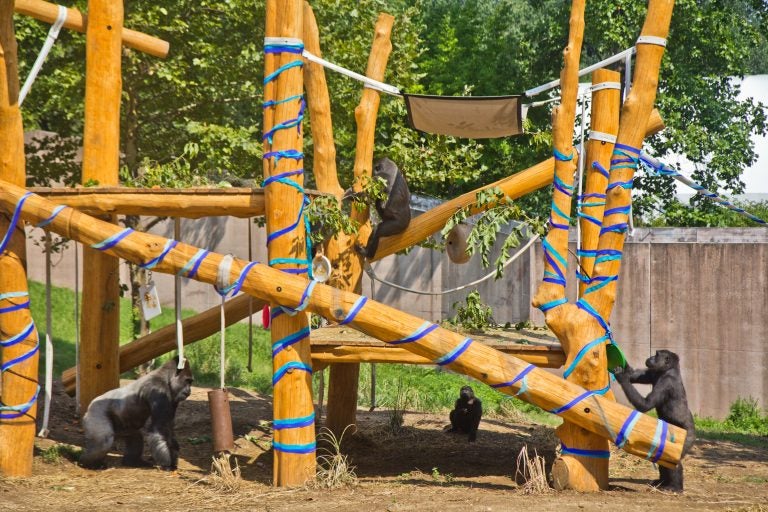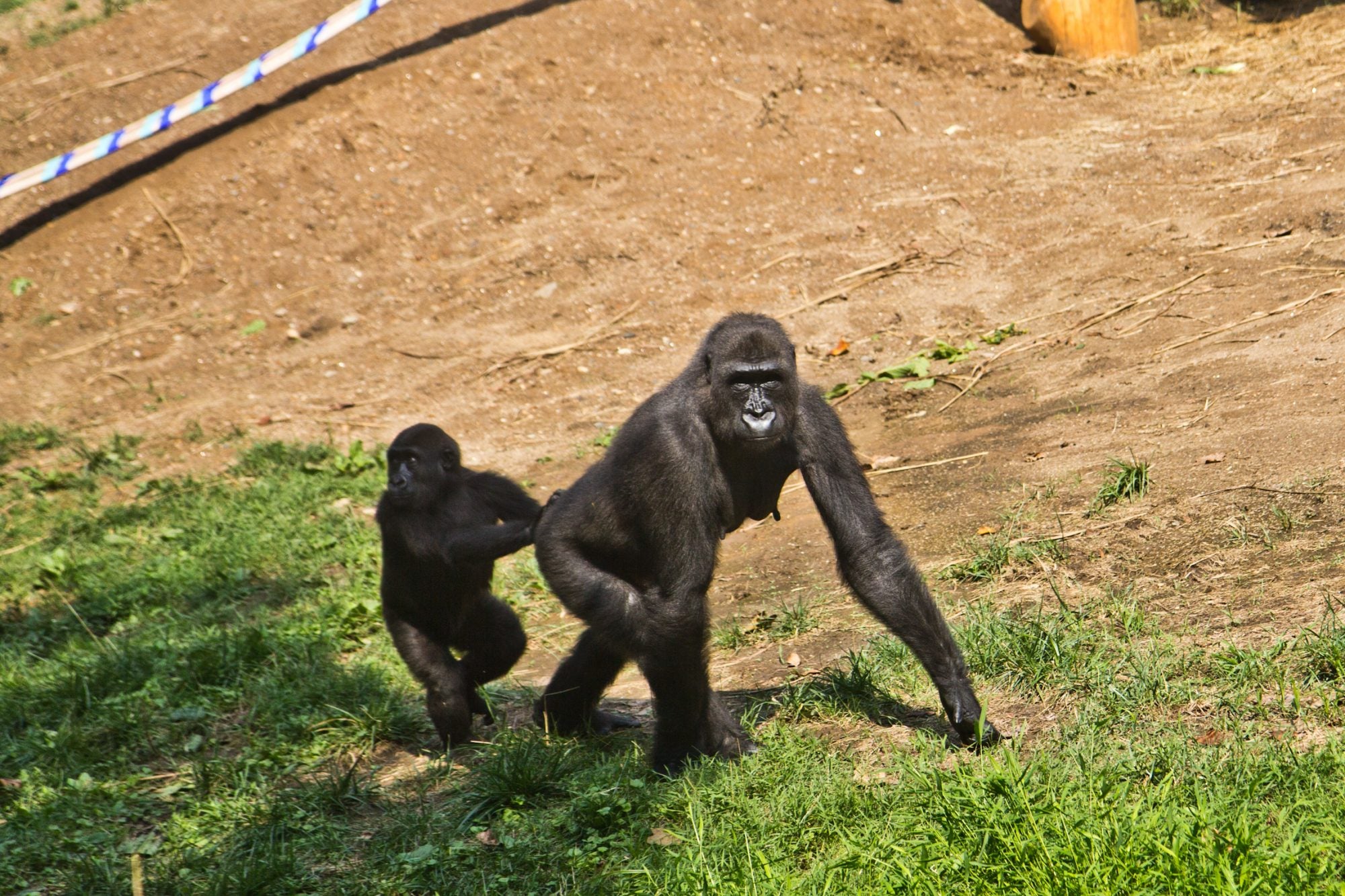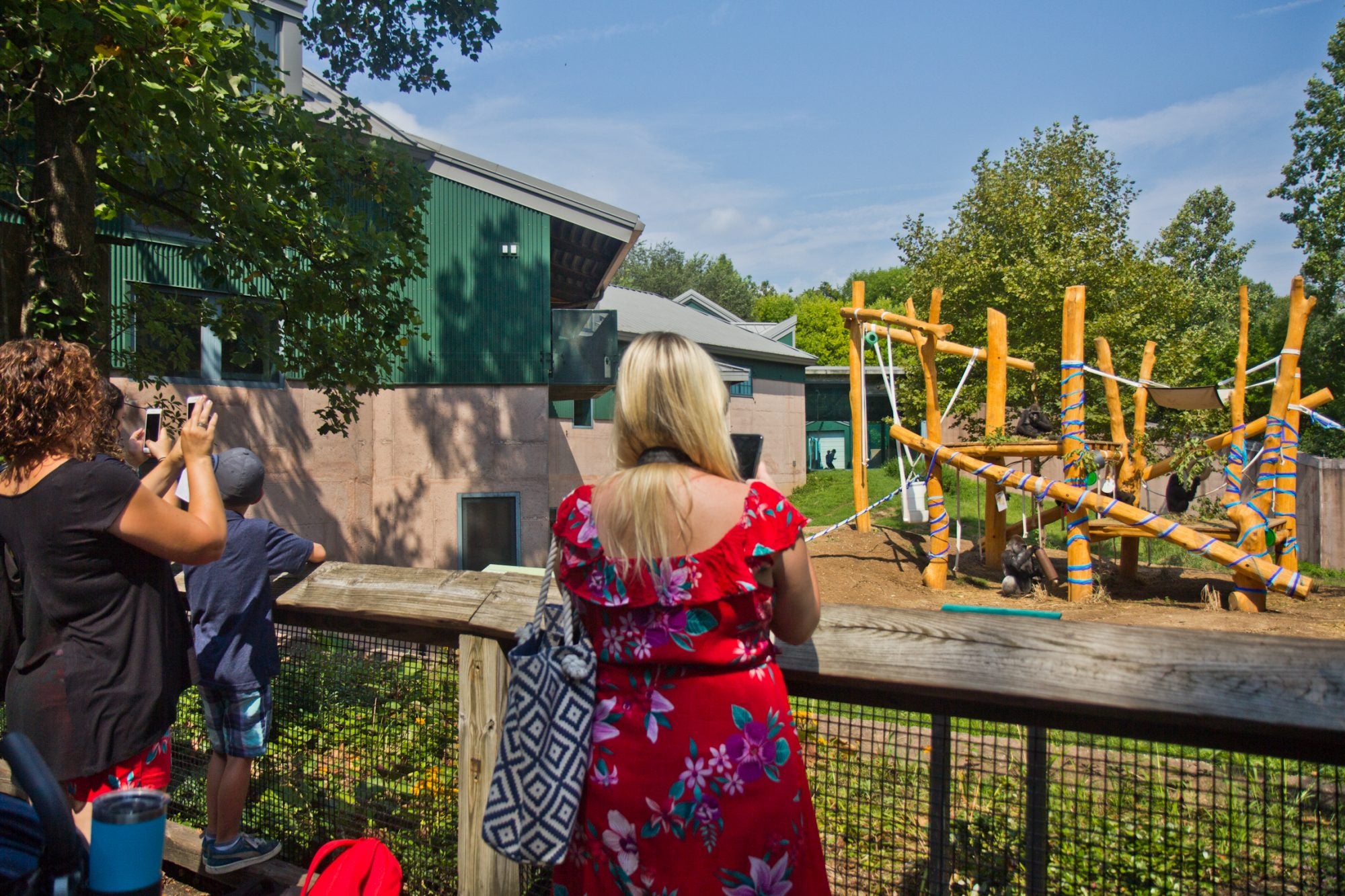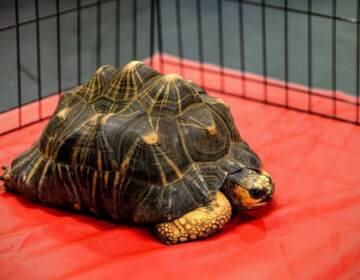Philly’s newest $100,000 house has some really hairy residents
This house won’t be another crash pad for millennials. Instead, the sturdy white oak, black locust, and cedarwood “treehouse” at the Philadelphia Zoo is for gorillas.

A troop of gorillas play on their treehouse at the Philadelphia Zoo. (Kimberly Paynter/WHYY)
Construction is complete for another mixed-use development in Philadelphia.
The two-story structure offers little in terms of shelter but satisfies most of the recreational amenities required by its seven tenants — all for $100,000 in construction costs.
But this house won’t be another crash pad for millennials. Instead, the sturdy white oak, black locust, and cedarwood “treehouse” at the Philadelphia Zoo is for gorillas.
The fixture, unveiled Wednesday, replaced an actual tree, a favorite of the gorillas, that used to sit in the backyard area of the PECO Primate Reserve.
“They kind of loved it to death and it didn’t last too long,” said Michael Stern, curator for primates and small mammals at the Philadelphia Zoo. The tree gave out after a decade of use.
Experience taught the zoo a replacement treehouse would need to check off several requirements to accommodate its inhabitants.

Designing a place for gorillas to play
Stern likens the African rainforests gorillas naturally inhabit to “salad bowls” — plenty of food within arm’s reach and lots of shade. But gorillas also favor natural clearings with little shade. These spaces are called bais.
The treehouse offers both. Fabric canopies offer shade at the ground level where gorillas can nosh on some freshly cut tree branches — their favorite. Elsewhere, designers left open space to keep the bais feel.
Stern said the zoo wanted the structure to double as a jungle gym, though gorillas don’t exercise much in their natural habitat.

“We want to keep them active and interested in life here at the zoo,” he said, pointing to several ropes and “toys” tied to fire hoses the gorillas can pull and push to earn treats.
Avoiding any roommate clashes were also part of design talks. The zoo wanted enough space for the roommates in case they want to “get away from one another,” especially Louis and Kuchimba, the two bachelors in the bunch who are not part of the other family of five.
And like with most real estate deals, the location was important.
The treehouse needed to be far away enough from the edges of the backyard so no ape could jump out, but close enough for visitors like 10-year-old Naila Storr to catch a glimpse.
“The baby gorilla keeps jumping out of the thing and landing into the little parachute,” Naila said, delighted by her first-ever gorilla sighting.
However, given all the jumping, the structure needed to be built to withstand the weight of seven gorillas, the heaviest of which weighs close to 500 pounds.
To outlast gorilla play and leisure, the treehouse was made using entire trees harvested from Wisconsin. With good upkeep, the treehouse should last for decades.
WHYY is your source for fact-based, in-depth journalism and information. As a nonprofit organization, we rely on financial support from readers like you. Please give today.





